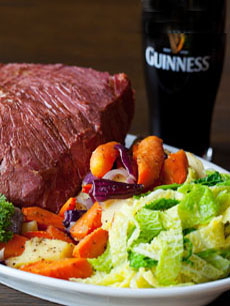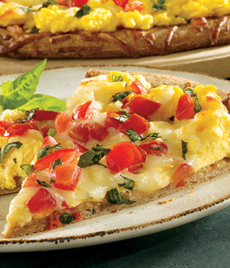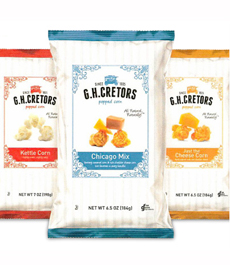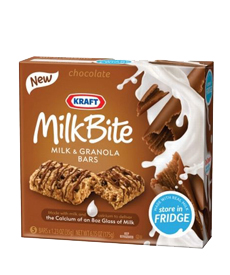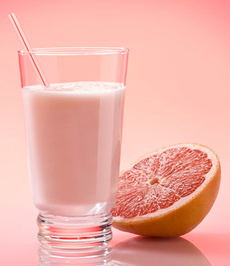|
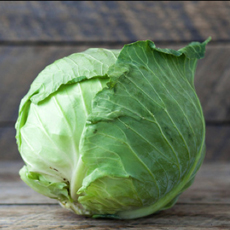
[2] The common green cabbage grown in the U.S. (photo © Good Eggs).
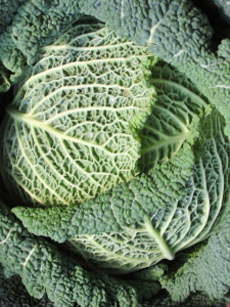
[2] A Savoy cabbage. The flavor is similar to the common green cabbage, but it’s much more handsome (photo © Christa Richert | SXC).
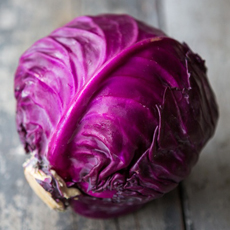
[3] A head of red cabbage. The flavor is similar to the common green cabbage, but it’s much more handsome (photo © Good Eggs)
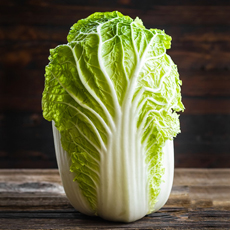
[4] There are many varieties of cabbage worldwide. Napa cabbage (sometimes called Chinese cabbage) is a Chinese variety that originated near Beijing. It has a more delicate flavor than Western cabbages. Thanks to Chinese populations, Napa cabbage is readily found in the U.S. (photo © MG Produce).
|
|
Preparation
1. Cook The Beef. Place the beef and Guinness into a pot and cover with cold water. Add onion, cloves, bay leaves and peppercorns. Cook for 2 to 2-1/2 hours, or until tender
2. Cook The Potatoes. Cook the potatoes in salted water; drain and mash. Add two-thirds of the butter, half the cream and the green onions. Season to taste with salt and pepper.
3. Cook The Cabbage. Boil the sliced cabbage in salted water for 5 minutes and drain; add 2 tablespoons of butter and season.
4. Make The Cream Sauce. Take 100ml of the cooking stock and place in a pot, add the other 200ml cream and simmer for 2 minutes whisking in 50g butter.
5. Serve. Carve the corned beef and plate several slices with a serving of potatoes and boiled cabbage; finish with the cream sauce.
CABBAGE HISTORY
Cabbage is part of the Brassicae botanical family, the group of cruciferous cancer-fighters that also includes bok choy, broccoli, Brussels sprouts, cauliflower, collards, horseradish, kale, kohlrabi, mustard greens, and radishes.
Cabbage is eaten raw (including brined, fermented and pickled) or cooked (braised, sautéed, steamed, stewed).
While the best-known cabbage dishes may be coleslaw (Holland), corned beef and cabbage (Irish-American), kimchi (Korea), sauerkraut (Germany), and stuffed cabbage (Eastern Europe), the leafy green vegetable is native to the Mediterranean.
While cabbage is grown around the world today, scientists can’t pinpoint where it originated, because many plants belong to the Brassicae family, one of which is the ancestor of today’s cabbage.
The most common theory is that cabbage was domesticated in Europe some 3,000 years ago, from wild predecessors that had thick leaves. The leaves retained water, which allowed cabbages to survive in colder places with less water (Russia has long been a stronghold for cabbages).
Cabbage And The Ancients
Different wild varieties exist in different locations worldwide.
In the East, cabbage cultivated in North China has been eaten since 4000 B.C.E.
Evidence shows that in central and western Europe, cabbage was domesticated by Celts, whose culture developed in western Europe as early as 1200 B.C.E., and spread to the British Isles, France, and other parts of Europe.
Mesopotamia also grew cabbages. The ancient Egyptians didn’t cultivate them until the times of the Ptolemaic dynasty, the last of the Egyptian dynasties (305 to 30 B.C.E.).
The Greek Theophrastus (371-287 B.C.E.), considered the “father of botany,” mentions cabbage in his texts as early as 4th-century B.C.E.
Cabbage was a favorite of the Greek philosopher Diogenes (412 or 404 B.C.E. to 323 B.C.E.).
The Greeks called heads of cabbage krambe while the Romans called it brassica or olus.
In Rome, cabbage was considered a luxury and many regarded it as superior to all other vegetables.
They also used it for medicinal purposes as relief from gout, headaches, and the symptoms of poisonous mushroom ingestion.
Pliny the Elder, the Roman author, philosopher, and naval commander, (23 C.E. to 79 C.E.), wrote about seven known variants of cabbage of the time.
Allegedly, both the ancient Egyptians and Romans ate large amounts of cabbage before a night of drinking, which allowed them to drink more before becoming intoxicated.
We haven’t tried it—and don’t plan to.
|
